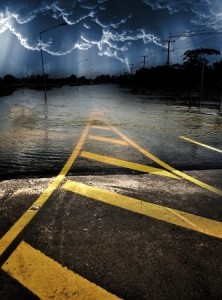As the UK begins to recover from its wettest winter for 100 years, while the US and Australia remain in the grip of extreme weather, Mark Rogers looks at how Disaster Recovery as a Service could help keep businesses running at the worst of times.
Disaster Recovery as a Service - DRaaS
After an unprecedented few months, which have seen Europe battered by a seemingly unending barrage of rain, high winds, flooding and storm surges, Australia beset by wildfires and the US in the grip of a polar vortex, it is time to start counting the cost of, for some, months of disruption. The news has been packed with tales of frozen cities, power cuts, flooded homes and decimated farmland – and rightly so – but what about the costs to business?
Sudden extreme weather events can have disastrous consequences for the unprepared – interrupting power supplies, damaging equipment and potentially destroying vital business data. And, sadly (if the experts are to be believed) it seems they are likely to become ever more common – so the ability to ‘weather the storm’ will become ever more important.
With that in mind, maybe now is the time to re-evaluate disaster recovery systems and processes. One thing is for sure, if you’re thinking about them with water lapping around your ankles, it’s already too late.
For many organisations, disaster recovery in the cloud, or Disaster Recovery as a Service (DRaaS) offers an ideal solution. So, if you haven’t considered DRaaS and the thought of another winter like 2013/14 (or summer for those in the southern hemisphere) keeps you awake at night, now would be a good time to take a closer look.
Disaster recovery in the cloud eliminates worry by offering a solution to meet recovery point and recovery time objectives that is affordable, flexible, secure and well managed. Here are four ways DRaaS can put your mind at rest:
- There’s no need to worry about who will implement the company’s DR plan when disaster strikes. Knowing there is an IT team in place to set the plan in motion allows employees to focus on other issues – like the safety of themselves and their families. Knowing that there’s a team in place already taking care of it is an immense relief.
- Natural disasters often wipe out power and communications across entire regions. If a company’s disaster recovery plan is in house or even locally based, disasters can leave DR plans in tatters. With DRaaS, however, as long as the DRaaS provider has facilities in more than one region of the country and offers failover access between facilities, its clients’ businesses can be up and running again in no time.
- To be effective, disaster recovery plans must have an element of redundancy, which by definition makes them expensive. DRaaS, however makes disaster recovery both accessible to, and affordable for, almost any organisation as redundancies become the responsibility of the provider and merely an operational expense for its clients.
- There’s really no way to know if a company’s disaster recovery plan works unless it is thoroughly and regularly tested, but testing DR plans for an emergency that hasn’t happened yet often takes a back seat to dealing with the very real and everyday issues that occur in a data center. With DRaaS, regular testing becomes much easier, and it is this kind of testing that ensures business-critical data will be available when and where it’s needed to keep the organisation running smoothly when and if disaster strikes.
The economic and efficiency benefits of DRaaS, then, are significant – as is its capacity to keep businesses working when the worst happens. In fact, as organisations worldwide become more defined by the service they consume than they are by the technology they own and maintain, it seems likely that DRaaS’ day will come – it is the very epitome of the ‘as a service’ model that is changing the face of business IT.
But, for those businesses located in areas at risk of future flooding, wildfires and more, it might be sensible to ensure that day comes sooner rather than later.
More:
USA"s winter weather damage at $5 billion so far USA Today 9th March 2014
Australia"s Worsening Droughts, Heatwaves and Bushfires Prompt Calls for Bigger Carbon Emission Cuts International Business Times. 5th March 2014

